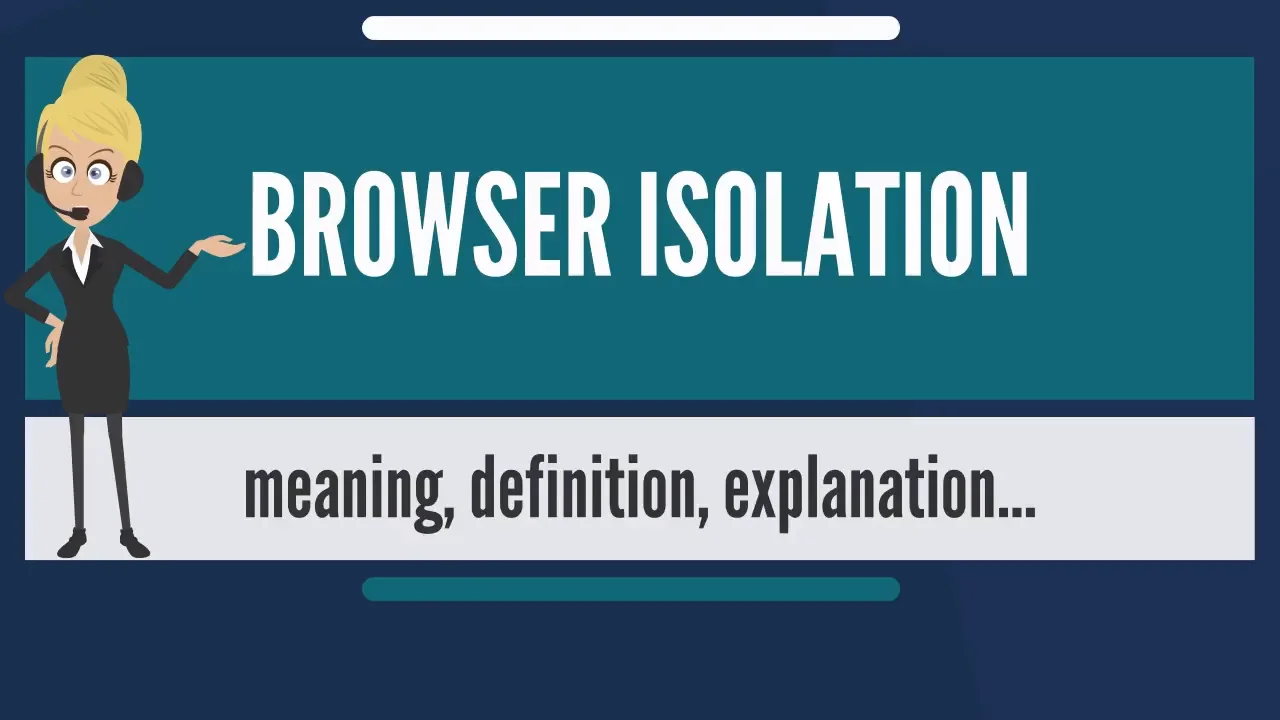**✪✪✪✪✪
http://www.theaudiopedia.com ✪✪✪✪✪**
What does BROWSER ISOLATION mean? BROWSER ISOLATION meaning - BROWSER ISOLATION definition - BROWSER ISOLATION explanation. What is the meaning of BROWSER ISOLATION? What is the definition of BROWSER ISOLATION? What does BROWSER ISOLATION stand for? What is BROWSER ISOLATION meaning? What is BROWSER ISOLATION definition?
Source: Wikipedia.org article, adapted under
https://creativecommons.org/licenses/by-sa/3.0/ license.
Browser isolation is a cybersecurity model that physically isolates an internet users browsing activity away from their local networks and infrastructure. Browser isolation technologies approach this model in different ways, but they all seek to achieve the same goal, effective isolation of the web browser and a users browsing activity as a method of securing web browsers from browser-based security exploits, as well as web-borne threats such as ransomware and other malware.
When a browser isolation technology is delivered to its customers or users as a cloud hosted service, this is known as remote browsing or remote browser isolation (RBI), a model which enables organizations to deploy a browser isolation solution to their users without managing the associated server infrastructure.
Browser isolation typically leverages virtualization or containerization technology to isolate the users web browsing activity away from the endpoint device - significantly reducing the attack surface for rogue links and files. Browser isolation is a way to isolate web browsing hosts and other high-risk behaviors from mission-critical data and infrastructure. Browser isolation aims to physically isolate users browsing activity away from local networks and infrastructure, isolating malware and browser based cyber-attacks in the process. Browser isolation is the process by which you physically isolate your users browsing activity away from your local networks and infrastructure, isolating malware and browser based cyber-attacks in the process.
In 2017, the American research group Gartner identified remote browser (browser isolation) as one of the top technologies for security. According to Gartner, more than 50% of enterprises will actively begin to isolate their internet browsing to reduce the impact of cyber attacks over the next three years.
Unlike traditional web security approaches such as antivirus software and secure web gateways, browser isolation does not rely on filtering content based on known threat patterns or signatures. Rather, this approach treats all websites and other web content that has not been explicitly whitelisted as untrusted, and isolates them from the local device in a virtual environment such as a container.
Web-based files can be rendered remotely so that end users can access them within the browser, without downloading them. Alternatively, files can be sanitized within the virtual environment, using file cleansing technologies such as Content Disarm & Reconstruction (CDR), allowing for secure file downloads to the user device.
Typically browser isolation solutions provide their users with 'disposable' (non-persistent) browser environments, once the browsing session is closed or times out, the entire browser environment is reset to a known good state or simply discarded. Any malicious code encountered during that session is thus prevented from reaching the endpoint or persisting within the network, regardless of whether any threat is detected. In this way, browser isolation proactively combats both known, unknown and zero-day threats, effectively complementing other security measures and contributing to a defense-in-depth, layered approach to web security.
